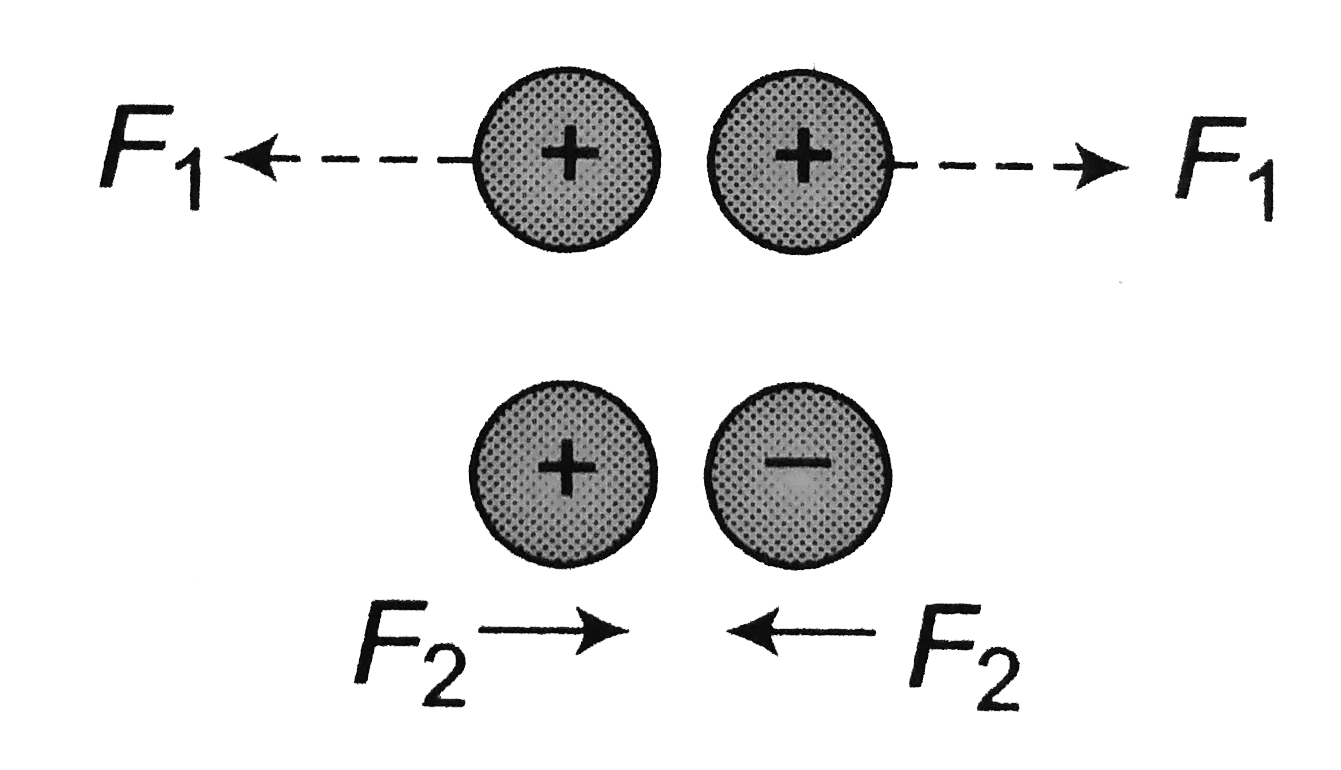Force between two identical spheres charged with same charge is F. If 50% charge of one sphere is transferred to the other sphere then the new force will be :-
34F
38F
32F
none of these
The correct Answer is:A
To solve the problem, we need to analyze the situation step by step.
Step 1: Understand the initial force between the two spheres
Let the charge on each sphere be q. The force F between two charged spheres is given by Coulomb's law:
F=kq⋅qL2=kq2L2
where k is Coulomb's constant and L is the distance between the centers of the spheres.
Step 2: Determine the new charges after transferring 50% of one charge
If 50% of the charge from one sphere is transferred to the other, the new charges on the spheres will be:
- Charge on the first sphere after transfer: q−q2=q2
- Charge on the second sphere after transfer: q+q2=3q2
Step 3: Calculate the new force between the spheres
Now, we can calculate the new force F′ between the two spheres using the new charges:
F′=k(q2)⋅(3q2)L2
Step 4: Simplify the expression for the new force
Substituting the values into the equation gives:
F′=k3q24L2=34(kq2L2)=34F
Step 5: Conclusion
Thus, the new force F′ between the two spheres after transferring 50% of the charge from one sphere to the other is:
F′=34F
Final Answer
The new force will be 34F.
---
Let the charge on each sphere be q. The force F between two charged spheres is given by Coulomb's law:
If 50% of the charge from one sphere is transferred to the other, the new charges on the spheres will be:
- Charge on the second sphere after transfer: q+q2=3q2
Now, we can calculate the new force F′ between the two spheres using the new charges:
Substituting the values into the equation gives:
Thus, the new force F′ between the two spheres after transferring 50% of the charge from one sphere to the other is:
The new force will be 34F.
Topper's Solved these Questions
Similar Questions
Two equal and opposite charges are placed at certain distance apart and force of attraction between them is F .If 75% charge of one " is transferred to another then the force between the charges becomes ..??
View SolutionThe centres of two identical small conducting sphere are 1 m apart. They carry charge of opposite kind and attract each other with a force F. when they connected by conducting thin wire they repel each other with a force F/3. The ratio of magnitude of charges carried by the spheres initially in n:1. Find value of n
View Solution
Knowledge Check
F is the force and r is the distance between two charges q. If charges are halved and distance is doubled, then the new force will
AF8BF16C4FDF4Two point charges A and B, having charges +Q and -Q respectively, are placed at certain distance apart and force acting between them is F, if 25% charge of A is transferred to B, then force between the charges becomes:
AFB9F16C16F9D4F3The force between two point charges in air is 100 N. If the distance between them is increased by 50%, then the force between two charges will be nearly equal to
A50NB56NC100ND44N
Two equal and opposite charges attract each other by a force F. If half of the charge from one is transferred to the other without changing distance between the charges, the force between the charges now become
View SolutionTwo point charges A and B, having charges +Q and -Q respectively, are placed at certain distance apart and force acting between them is F, if 25% charge of A is transferred to B, then force between the charges becomes:
View SolutionThe force of repulsion between two point charges is F, when these are at a distance of 1m. Now the point charges are replaced by spheres of radii 25cm having the charge same as that of point charges. The distance between their centres is 1m, then compare the force of repulsion in two cases.
View SolutionThree identical spheres, each having a charge q and radius R. are kept in such a way that each touches the other two. The magnitude of the electric force on any sphere due to the other two is
View SolutionIn two cases, two identical conducting sphere are given equal charges, in one case of the same type whereas in another case of opposite type. The distance between the spheres is not large comparing with the diameter. Let F1 and F2 be the magnitudes of the force of interaction between the spheres, as shown, then

View Solution